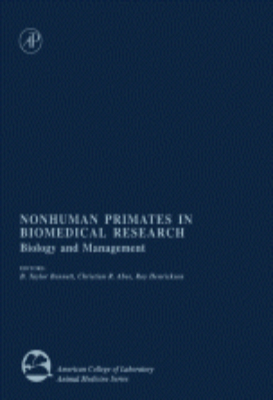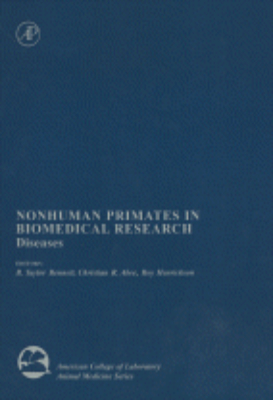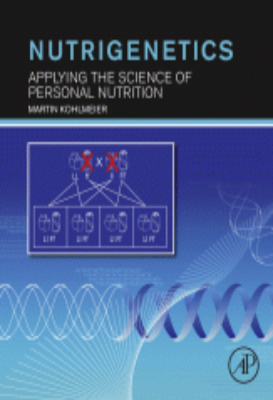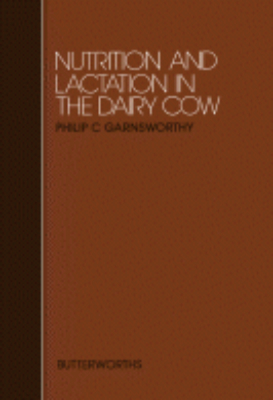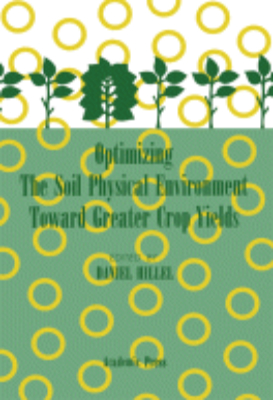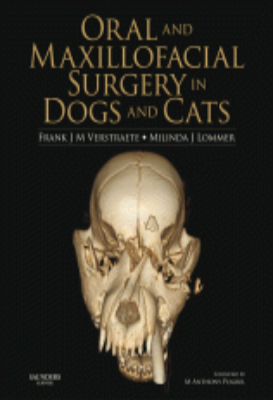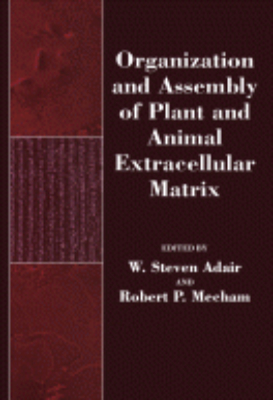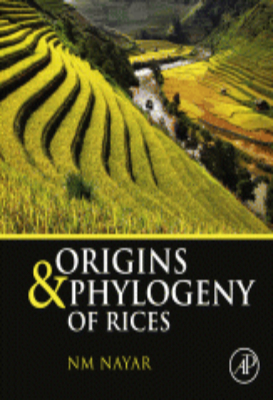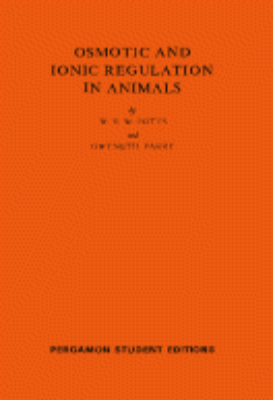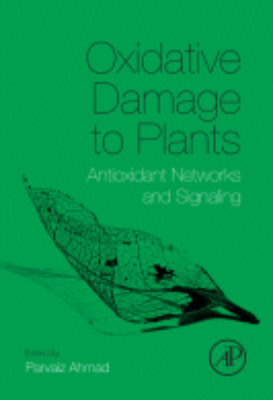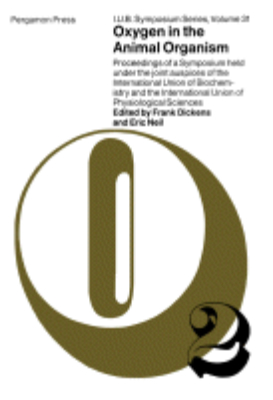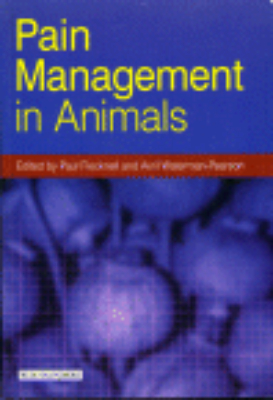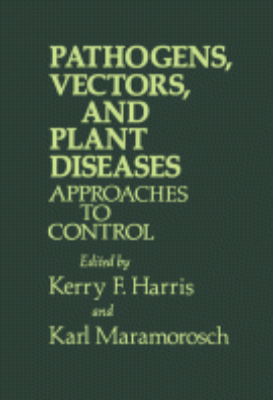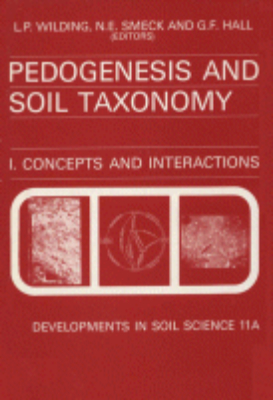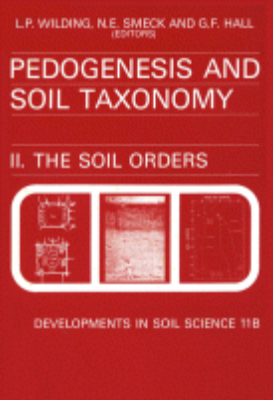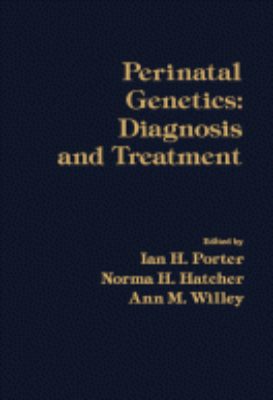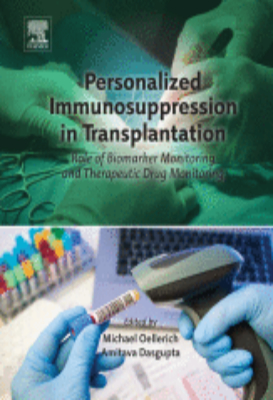ebooks
Nonhuman Primates in Biomedical Research: Biology and Management
Nonhuman Primates in Biomedical Research: Biology and Management represents the most comprehensive publication of its type on nonhuman primates. It also provides basic information on the biology and management of primates for anyone responsible for the care and use of these animals. A related book on primate diseases will be published in 1996.
Nonhuman Primates in Biomedical Research: Diseases
This volume and its companionNonhuman Primates in Biomedical Research: Biology and Managementrepresent the most comprehensive publications of their type on nonhuman primates. This volume addresses the diseases of nonhuman primates with an emphasis on the etiological factors, clinical signs, diagnostic pathology, therapy, and management. Its companion volume serves as a general reference for those who provide care for these animals and for those who use them in biomedical research.
Nuclear Magnetic Resonance in Biochemistry
Nuclear Magnetic Resonance in Biochemistry: Principles and Applications focuses on the principles and applications of nuclear magnetic resonance (NMR) in biochemistry. Topics covered include experimental methods in NMR; the mechanisms of NMR relaxation; chemical and paramagnetic shifts; spin-spin splitting; the use of NMR in investigations of biopolymers and biomolecular interactions; and molecular dynamics in biological and biochemical systems. This text is comprised of eight chapters; the first of which gives an overview of NMR spectroscopy and its use in studies of biological systems. The next two chapters discuss the theoretical basis for NMR applications in biochemistry, with emphasis on Bloch equations, quantum mechanics, correlation function and correlation time, double resonance, and chemical exchange. The reader is then introduced to the basis for chemical shifts and spin-spin splitting, along with several examples of the use of these NMR parameters in studies of small molecule interactions and structure. The experimental apparatus and procedures employed in NMR studies, Fourier transform NMR, and NMR spectral parameters of small molecules interacting with macromolecules are also considered. The book highlights the information obtainable from the spectra of biopolymers, and then concludes with a chapter on NMR investigations of the state of motion of lipids in membranes and model membranes; water in macromolecular and cellular systems; and sodium ion in biological tissue. This book is intended primarily for chemists, biochemists, biophysicists, and molecular biologists, as well as graduate students.
Nutrigenetics
Nutrigenetics: Applying the Science of Personal Nutrition provides a fully referenced, readable guide to understanding the rationale and importance of nutrigenetic applications and explains why single nutrition recommendations will not fit everybody or even a majority of modern humans. This books explains how genetic variation shapes individual nutrition requirements and sensitivities, presents questions to ask about reported gene-nutrient interactions, and what needs to be done before putting nutrigenetic tests to practical use. This book blends key concepts from the fields of genetics, biochemistry, epidemiology, public health, and clinical medicine to give a rich perspective on the genetically diverse nutritional needs and sensitivities of individuals in health and disease. A steadily increasing number of people order genetic tests to find out what they should eat for better health, well being and performance, and an even greater number asks their healthcare providers about such tests. Most of the currently offered tests are not grounded in current knowledge, often absurdly so, but few professionals can explain why they are misguided. On the other hand, there are more evidence-supported genetic variants that can guide nutrition decisions, but again most healthcare providers know little about them, much less use them in their daily practice. There is a great need for a solidly evidence-based yet accessible book that explains the science of nutrigenetics and provides the tools to evaluate new nutrigenetic tests.
Nutrition and Biochemistry of Milk/maintenance
Lactation: A Comprehensive Treatise, Volume III: Nutrition and Biochemistry of Milk/Maintenance focuses on the nutrition and biochemistry of milk and its constituents, including the nutritional aspects of milk as a food and nutritional maintenance of lactation in those species from which milk is utilized as a source of human food. This book is divided into two partsbiochemistry of milk and its nutritive quality and maintenance of lactation. In these parts, this volume specifically discusses the differences among species in milk composition; significance of polymorphism; pesticide residues in bovine milk; and transfer of radiostrontium into milk. The role of the mammary gland in the immune system; methodology of diagnosis of milk hypersensitivity; and metabolic defects in galactose metabolism are also elaborated. This text likewise covers the factors affecting nutritional requirements of lactating animals and shape of the lactation curve. This publication is useful to biologists, food technologists, and college students interested in lactation research.
Nutrition and Lactation in the Dairy Cow
Nutrition and Lactation in the Dairy Cow is the proceedings of the 46th University of Nottingham Easter School in Agricultural Science. Said symposium was concerned with the significant advances in the field of nutrition and lactation in the dairy cow. The book is divided in five parts. Part I deals with the principles behind nutrition and lactation of cows. Part II discusses the cows nutrient interactions; responses to nutrients that yield protein and energy; and the influence of nutrient balance and milk yields. Part III tackles the efficiency of energy utilization in cows and its relation to milk production. Part IV talks about food intake of cows and the factors that affect it, while Part V deals with the different feeding systems for cows. The text is recommended for those involved in raising cows and dairy production, especially those who would like to know more and make studies about the relationship of nutrition and lactation of cows.
Nutritional Biochemistry
"Nutritional Biochemistry takes a scientific approach to nutrition. It covers not just ""whats""--nutritional requirements--but why they are required for human health, by describing their function at the cellular and molecular level. Each case study either leads to a subsequent discovery or enables an understanding of the physiological mechanisms of action of various nutrition-related processes. The text is ""picture-oriented"" and the commentary is directed towards explaining graphs, figures, and tables. Nutritional Biochemistry includes a discussion of relevant aspects of physiology, food chemistry, toxicology, pediatrics, and public health. Experimental techniques for nutritional science are emphasized, and primary data is included to help give students a feel for the nutrition literature. This ""real-world"" approach provides students with a realistic view of the basis for much of our understanding of nutritional biochemistry. Key Features. Integrates biochemistry and nutrition in a case-oriented method. Emphasizes a hands-on approach to learning - case histories and clinical and research data illustrate all major points. Places emphasis on metabolism - metabolic pathways, enzymology, nutrient requirements (including RDA values). Reveals the benefits of the Mediterranean diet, the biochemistry of exercise, the cell signaling pathways, how nutrition can influence the development of cancer, and the anthropometry and genetics of obesity"
Nutritional Composition of Fruit Cultivars
"Nutritional Composition of Fruit Cultivars provides readers with the latest information on the health related properties of foods, making the documentation of the nutritive value of historical cultivars especially urgent, especially before they are lost and can't be effectively compared to modern cultivars. Because there is considerable diversity and a substantial body of the compositional studies directed towards commercial varieties, this information is useful for identifying traits and features that may be transposed from one variety to another. In addition, compositional and sensory features may also be used for commercialization and to characterize adulteration. Detailed characterization of cultivars can be used to identify ""super-foods"". Alternatively, unmasked historical cultivars may be the focus of reinvigorated commercial practices. Each chapter in this book has sections on the botanical aspects, the composition of traditional or ancient cultivars, the composition of modern cultivars, a focus on areas of research, the specialty of the communicating author of each chapter, and summary points. Key Features. Presents the botanical aspects and composition of both traditional and modern plants, including in-depth insight into current research, and overall summary points for each fruit for consistent comparison and ease of reference. Provides important information in the consideration of preservation, transference, or re-introduction of historical/traditional cultivars into current crop science. Provides details on compositional and sensory parameters, from aroma and taste to micro- and macronutrients. Includes data on nutraceuticals and novel components that have proven to impact on, or be important in, food quality, storage, processing, storage, and marketing"
Opioid Peptides: Biology Chemistry and Genetics
The Peptides: Analysis, Synthesis, Biology, Volume 6: Opioid Peptides: Biology, Chemistry, and Genetics presents a biological topic of peptide research. This book is divided into nine chapters. Chapter 1 reviews the opioid peptide precursors and their genes. The proenkephalin and products of its processing are discussed in Chapter 2. In Chapter 3, the role of pro-opiomelanocortin (POMC) as a protein at the interface of the endocrine and nervous systems is examined. Chapter 4 provides a comprehensive account of the biology and chemistry of the dynorphin peptides. The opioid receptors are described in Chapter 5. Chapter 6 evaluates the structure-activity relationships of -endorphin, while Chapter 7 considers the conformational analysis of enkephalins and conformation-activity relationships. The structure-activity relationships among enkephalin peptides are elaborated in Chapter 8. The last chapter is devoted to the clinical significance of opioid peptides in humans. This publication is a good reference for biologists, specialists, and researchers concerned with peptides and proteins.
Optimizing the Soil Physical Environment Toward Greater Crop Yields
Optimizing the Soil Physical Environment Toward Greater Crop Yields contains the proceedings of an invitational panel convened during the International Symposium on Soil-Water Physics and Technology held at The Hebrew University Faculty of Agriculture in Rehovot, Israel, August 29 to September 5, 1971. Organized into 13 chapters, this book begins with a discussion on the criteria for determining the aims and direction of research in soil physics and technology. Some chapters deal with the transformation and fluxes of energy and matter in the field, particularly water, soil temperature, soil structure, soil salinity, radiation climate, and nutrient supply and uptake. The book also explores the methods of measuring, managing, and modifying the crop production system to greater agricultural advantage. This book will reflect not only what is known, but also what is missing in the incomplete conception of this environment.
Oral and Maxillofacial Surgery in Dogs and Cats
Oral and Maxillofacial Surgery in Dogs and Cats offers a unique, detailed, comprehensive and highly illustrated account of surgical procedures that will improve outcomes for all surgical and dental specialists. In drawing together the expertise of specialists worldwide, it will also prove indispensable for general practitioners with a dental and oral caseload. Basic principles are considered prior to in-depth treatment of surgical conditions. The book combines expertise from both human and veterinary oral surgeons to provide an authoritative reference with a strongly practical slant. It is likely to become the standard work in the field for many years.
ORD and CD in Chemistry and Biochemistry
ORD and CD in Chemistry and Biochemistry: An Introduction essentially presents the necessary foreword and theoretical foundation for the useful application of optical rotatory dispersion (ORD) and circular dichroism (CD) to certain common chemical problems. This book emphasizes the precision of ORD and CD data in terms of stereochemical information. The book begins with some historical references and a concise review of basic principles on stereochemistry. It further delves onto the phenomena of optical activity. Also included are the definitions and units commonly used in ORD and CD. The book also discusses optical properties of polymers, organometallic, and inorganic derivatives; and some of the aspects of magnetic optical rotator dispersion (MORD) and magnetic circular dichroism (MCD). A table that presents wavelength range of the Cotton effects of most chromophoric groupings concludes the book. This monograph is a helpful reference to students as well as professionals from both chemistry and biochemistry fields of science.
Organization and Assembly of Plant and Animal Extracellular Matrix
Organization and Assembly of Plant and Animal Extracellular Matrix presents a state-of-the-art view of some of the experimental systems in plant and animal matrix biology. It discusses certain principles underlying establishment of complex three-dimensional architecture cross broad evolutionary boundaries. The opening chapter reviews studies on the cellular mechanisms responsible for storage, release, assembly, and function of extracellular matrices during early sea urchin development. The subsequent chapters describe the structure, assembly, disassembly, and molecular biology of the Chlamydomonas reinhardtii cell wall. The chapters also summarize the status of work on basement membrane assembly. Important insights into approaches to identify critical molecular domains and the complexity of relating defined molecular associations to establishment of matrix architecture are provided. A family of discovered cell wall genes that encode protein products containing up to 70% glycine is presented in Chapter 4. This is followed by a discussion on the role of alginate self-assembly in cell wall formation in Fucus. The book goes on to address the issue of protein-carbohydrate recognition with a detailed discussion of plant and animal lectins. Chapter 7 tackles a family of genes encoding higher plant hydroxyproline-rich glycoproteins (HRGPs) and the relationship between the HRGP genes cloned and their products. The final two chapters are devoted to one of the most important classes of protein modifying enzymes for extracellular matrix formation and function, the prolyl hydroxylases. This book will be of help to workers in plant and animal matrix in understanding information, approaches, and ideas that they may not normally encounter.
Origin and Phylogeny of Rices
"rigin and Phylogeny of Rices provides an evolutionary understanding of the origin, spread, and extent of genetic diversity in rice. This single volume is the first to review and synthesize the significant work done in this area in the last 30 years.Rice is the most important food crop of humankind. It provides more energy and also forms the staple food for more humans than any other food plant. This book assesses multiple aspects of this crucial crop in chapters devoted to rice's history and spread, phylogeny of the genus Oryza, Oryza species and their interrelationships, and the origins of west African and Asian rice. Key Features. Offers an interpretive review of the latest research on this vital crop. Guides further research and understanding with an extensive list of references. Enhances the presentation of concepts via illustrations throughout"
Osmotic and Ionic Regulation in Animals
Osmotic and Ionic Regulation in Animals focuses on the processes involved in osmoregulation. The book first discusses general considerations of osmoregulation in animals, including the distinction of body fluids, definitions, and properties of solutions and membranes. The text also looks at the different types of excretory organs, including the differentiation of the excretory organs of mollusks, crustaceans, and vertebrates; protonephridia; and excretion in insects. The selection also describes the ionic regulation in marine animals. Topics include the selective advantages of ionic regulation; mechanisms of ionic regulation; and composition of tissues. The text also discusses osmotic regulation in brackish and freshwater animals. The book also focuses on osmotic regulation in terrestrial animals, including salt gain and loss, secretions, water loss and uptake, and osmotic pressure and composition of blood. The text is a good source of information for readers interested in osmoregulation.
Oxidative Damage to Plants
"With contributions that review research on this topic throughout the world, Oxidative Damage to Plants covers key areas of discovery, from the generation of reactive oxygen species (ROSs), their mechanisms, quenching of these ROSs through enzymatic and non-enzymatic antioxidants, and detailed aspects of such antioxidants as SOD and CAT. Environmental stress is responsible for the generation of oxidative stress, which causes oxidative damage to biomolecules and hence reduces crop yield. To cope up with these problems, scientists have to fully understand the generation of reactive oxygen species, its impact on plants and how plants will be able to withstand these stresses. Key Features. Provides invaluable information about the role of antioxidants in alleviating oxidative stress. Examines both the negative effects (senescence, impaired photosynthesis and necrosis) and positive effects (crucial role that superoxide plays against invading microbes) of ROS on plants. Features contributors from a variety of regions globally"
Oxygen in the Animal Organism
Oxygen in the Animal Organism is a compilation of papers presented during the symposium on Oxygen in the Animal Organism, jointly sponsored by the International Union of Biochemistry and the International Union of Physiological Sciences, held at Bedford College, London in September 1963. The book provides a multidisciplinary approach to the study of the subject of oxygen in the animal organism. The papers presented cover a wide range of facts and hypotheses on the subject. Topics discussed include studies in the transport of oxygen; the fundamental physics and chemistry of oxygen; the diffusion of oxygen from the capillaries to the mitochondria; the neural and humoral components to the regulation of ventilation; and the evolution of biochemical pathways for oxygen. Biologists, biochemists, biophysicists, physiologists, and researchers will find the text informative and insightful.
Pain Management in Animals
An ever-increasing number of drugs are available to veterinarians for use in the control of pain. This new, concise guide gives vets with all the information they need to choose the most appropriate pain medication for any clinical situation. Introductory chapters explain the physiology of pain and pharmacology of analgesics, and are followed by detailed chapters on management of acute and post-operative pain and chronic pain, the problems of pain management and pain assessment. Written by an international team of veterinary pain management experts,Pain Management in Animalsprovides vets with all the information they need to provide good pain control in all their patients.
Pathogens Vectors and Plant Diseases
Pathogens, Vectors, and Plant Diseases: Approaches to Control is a collection of papers that discusses how vector host interactions, vector ecology, and disease epidemiology can be applied to disease prevention and control. The book deals with innovative strategies pertaining to control of vector-borne viruses and viral infections in plants. One paper discusses nonpesticidal control of vector-borne viruses including soil solarization that uses solar energy for crop protection, and insect sterilization through radiation, chemosterilants or genetic modifications. Another paper discusses chemicals that interfere with nucleic acid and protein synthesis; as these interactions pose no hazards to animal (mammals), the chemicals are suitable for controlling viral diseases. One author examines the use of oil sprays and reflective surfaces as a means of controlling plant viruses transmitted by insects. In the United States, the entry of vector-borne plant pathogens is controlled by plant quarantine. One author lists several ways in effective quarantine procedures, as well as, the safe importation of potential vectors as cultures. This book is suitable for environmentalists, biologists, conservationists, agriculturists, botanists, and researchers in botany and plant genealogy.
Pathology of Domestic Animals: Volume 1 1963
Pathology of Domestic Animals, Volume 1 elaborates on the bone structure and diseases, as well as the genital, circulatory, and respiratory systems, of domestic animals. The manuscript first offers information on bones, joints, and synovial structures and diseases of joints, including adaptational deformities of the skeleton, metabolic diseases of bones, necrosis and inflammation of bones, and discontinuities of bone and the healing of fractures. The text then ponders on the circulatory and respiratory systems. Discussions focus on congenital anomalies of the heart and large vessels, myocardium, hypertrophy and dilation of the heart, pharynx and guttural pouches, larynx and trachea, lungs, and pleura and mediastinum. The publication examines the haemopoietic system and endocrine glands. Topics include blood and bone marrow, general reactions of erythrocytes to injury, lymphoreticular tissues, adrenal glands and paraganglia, and polycythaemia. The book then reviews the male and female genital systems. The manuscript is a valuable source of data for readers interested in the pathology of domestic animals.
Pathology of Domestic Animals: Volume 1 1993
"The all-new Fourth Edition of Pathology of Domestic Animals comprehensively covers the biology and pathology of diseases of domestic animals on a systemic basic. Updated and expanded to reflect the current knowledge of the study of domestic animal diseases, this three-volume set appeals to veterinarians, veterinary students, trainee veterinary pathologists learning the scope of their field, and practicing pathologists confronted with diagnostic problems. Key Features. All material completely updated and expanded to reflect the current knowledge of the study of diseases of domestic animals. Covers the biology and pathology of diseases of domestic animals on a global basis. Emphasizes the pattern of disease and the defense mechanisms of each organ system. Several new illustrations"
Pathology of Domestic Animals: Volume 2 Fourth Edition 1993
"The all-new Fourth Edition of Pathology of Domestic Animals comprehensively covers the biology and pathology of diseases of domestic animals on a systemic basic. Updated and expanded to reflect the current knowledge of the study of domestic animal diseases, this three-volume set appeals to veterinarians, veterinary students, trainee veterinary pathologists learning the scope of their field, and practicing pathologists confronted with diagnostic problems. Key Features. Improvements over the Third Edition:. All material completely updated and expanded to reflect the current knowledge of the study of diseases of domestic animals. Covers the biology and pathology of diseases of domestic animals on a global basis. Emphasizes the pattern of disease and the defense mechanisms of each organ system. Several new illustrations"
Pathology of Domestic Animals: Volume 2 Third Edition 1985
Pathology of Domestic Animals, Third Edition, Volume 2 deals with various aspects of veterinary pathology, with emphasis on the disease of domestic animals. This text covers animal diseases affecting the alimentary, urinary, and respiratory systems; the liver and biliary system; the pancreas; and the peritoneum, retroperitoneum, and mesentery. This book is organized into six chapters and begins with a discussion of diseases of the organs comprising the alimentary system, including the oral cavity, tonsils, salivary glands, esophagus, stomach, and intestine. Emphasis is given to congenital anomalies and infectious and parasitic diseases of the gastrointestinal tract. The reader is then introduced to conditions that afflict animal liver and biliary system, such as inflammation, and anomalies of the pancreas. The chapters that follow focus on congenital anomalies of the peritoneum, retroperitoneum, and mesentery, along with circulatory disturbances and diseases of the blood vessels. The book concludes with an account of respiratory diseases, including metabolic and circulatory disturbances of nasal cavity and sinuses, laryngitis and tracheitis, and pulmonary hypertension. This book is intended for practitioners of veterinary medicine as well as teachers and students of pathology in the hope that they will contribute to an understanding of animal disease.
Pathology of Domestic Animals: Volume 3 Fourth Edition 1993
"The all-new Fourth Edition of Pathology of Domestic Animals comprehensively covers the biology and pathology of diseases of domestic animals on a systemic basic. Updated and expanded to reflect the current knowledge of the study of domestic animal diseases, this three-volume set appeals to veterinarians, veterinary students, trainee veterinary pathologists learning the scope of their field, and practicing pathologists confronted with diagnostic problems. Key Features. All material completely updated and expanded to reflect the current knowledge of the study of diseases of domestic animals. Covers the biology and pathology of diseases of domestic animals on a global basis. Emphasizes the pattern of disease and the defense mechanisms of each organ system. Several new illustrations"
Perinatal Genetics
Perinatal Genetics: Diagnosis and Treatment brings together the proceedings of the 15 Annual New York State Health Department Birth Defects Symposium held on September 30-October 1, 1984 in Albany, New York. The symposium provided a forum for clarifying and rationalizing certain aspects of diagnosis and treatment of perinatal genetic birth defects such as fragile X syndrome, phenylketonuria, and hypothyroidism. Comprised of 17 chapters, this book begins with an epidemiological review of very early pregnancy loss, focusing on fertilization and implantation; the probability of loss between fertilization and implantation (on about the sixth day), and between implantation and the 14th day (the first day of the expected next period in a non-pregnant woman); and the contribution of chromosomal errors in the sperm, ovum, and zygote to early reproductive loss. The reader is then introduced to cytogenetic abnormalities in spontaneous abortions of recognized conceptions; repetitive spontaneous abortion; and prenatal genetic diagnosis by chorionic villus sampling. Subsequent chapters explore prenatal treatment of biochemical disorders; in vitro fertilization and embryo transfer; and moral issues concerning third trimester pregnancy terminations. This monograph will appeal to perinatologists, neonatologists, obstetricians, pediatricians, and geneticists and should also serve as a useful guide for health professionals who provide care to pregnant women and their newborns.
Personalized Epigenetics
Personalized Epigenetics discusses the core translatability of epigenetics to health management of individuals who have unique variations in their epigenetic signatures that can guide both disorder and disease prevention and therapy. The book details inter-individual variability in the major epigenetic process in humans consisting of DNA methylation, histone modifications, and noncoding RNA, and the diagnostic, prognostic, and therapeutic potential of the field, it also reviews the impact of the environment on epigenetic variations among individuals and the role of pharmacology and drug development in personalized epigenetics. Most importantly, the text covers personalized epigenetics from a disease-oriented perspective, presenting chapters that provide advances in widespread disorders or diseases, including diabetes, cancer, autoimmune disorders, obesity, cardiovascular diseases, neurological disorders, and pain management.
Personalized Immunosuppression in Transplantation
"Personalized Immunosuppression in Transplantation: Role of Biomarker Monitoring and Therapeutic Drug Monitoring provides coverage of the various approaches to monitoring immunosuppressants in transplant patients, including the most recently developed biomarker monitoring methods, pharmacogenomics approaches, and traditional therapeutic drug monitoring. The book is written for pathologists, toxicologists, and transplant surgeons who are involved in the management of transplant patients, offering them in-depth coverage of the management of immunosuppressant therapy in transplant patients with the goal of maximum benefit from drug therapy and minimal risk of drug toxicity. This book also provides practical guidelines for managing immunosuppressant therapy, including the therapeutic ranges of various immunosuppressants, the pitfalls of methodologies used for determination of these immunosuppressants in whole blood or plasma, appropriate pharmacogenomics testing for organ transplant recipients, and when biomarker monitoring could be helpful. Key Features. Focuses on the personalized management of immunosuppression therapy in individual transplant patients. Presents information that applies to many areas, including gmass spectrometry, assay design, assay validation, clinical chemistry, and clinical pathology. Provides practical guidelines for the initial selection and subsequent modifications of immunosuppression therapy in individual transplant patients. Reviews the latest research in biomarker monitoring in personalizing immunosuppressant therapy, including potential new markers not currently used, but with great potential for future use. Explains how monitoring graft-derived, circulating, cell free DNA has shown promise in the early detection of transplant injury in liquid biopsy"

